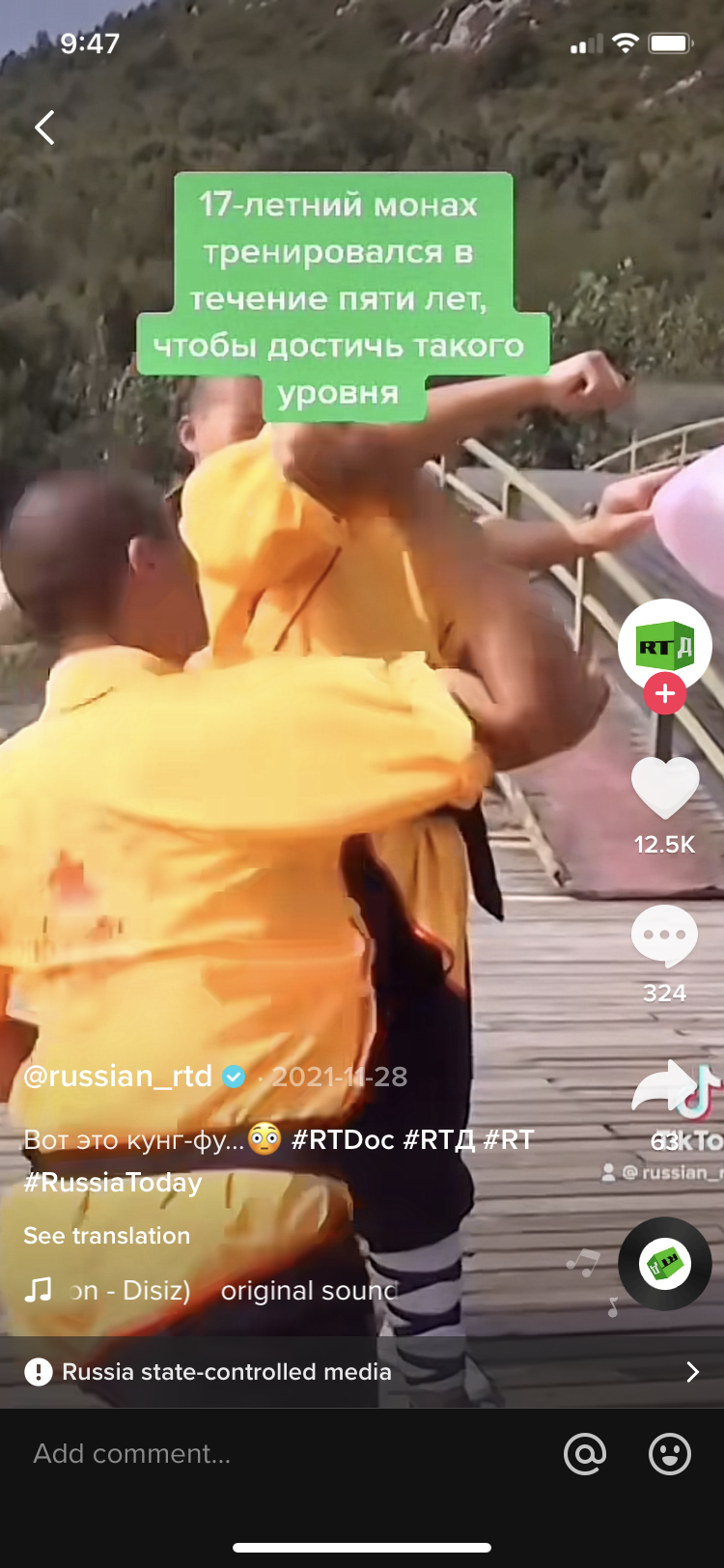TikTok has officially entered the Russian information war.
The social network announced several new measures Friday intended to prevent misinformation and propaganda from spreading among TikTok users. The measures are positive, but potentially overdue: Outlets including The Guardian and The New York Times have reported that TikTok is rife with misleading videos purporting to depict footage of the war.
One way social media networks are trying to combat misinformation is by making the fact that the Russian government controls the messaging of its media organizations apparent to users with “state-affiliated media” labels. Now, TikTok has joined the fray, accelerating an initiative, which it says got started in 2021, to roll out labels in the coming days. Already, posts from the TikTok accounts of outlets like RT come with a label that designates it as “Russia state-controlled media.”

A “Russia state-controlled media” label in action.
Credit: Screenshot: TikTok
Clicking the label takes TikTok users to an explanation of what it means and recommendations for how users should consider the source of the content they’re watching.
“We determine whether an organization may be editorially controlled by a government based on evidence collected by credible, authoritative, and independent external experts,” the label explanation reads. It prompts viewers to “pause and ask yourself about the source’s objectivity” and “consider if the video tries to advance a particular perspective.”
Other social networks have had these labels for years. But they’re new to TikTok — a platform owned by Chinese company ByteDance. China happens to also have state-run media. TikTok’s announcement specifically said it would roll out content on “some” state-affiliated channels. It’s not clear whether or not this will apply to the TikTok accounts of Chinese outlets; TikTok told PC Mag that it won’t release further details until its “broader policy roll out later this year.”

Will people click through?
Credit: Screenshot: TikTok
 What actually constitutes ‘state controlled media’ can be a thorny question.
What actually constitutes ‘state controlled media’ can be a thorny question.Credit: Screenshot: TikTok
A study from the Harvard Misinformation Review found that labeling state-controlled media as such is an effective way to counter propaganda. But there’s one catch: The labels have to be prominent enough so as not to be missed.
TikTok’s labels appear on a semi-translucent bar at the bottom of the video, with a white text exclamation mark in front of the “Russia state-controlled media” text. The labels are already live on the TikTok app, but do not appear to have populated to the web browser version of TikTok yet. A TikTok spokesperson told Mashable that you’ll start seeing those “in the coming days.”
In addition to labeling, TikTok’s blog notes that the company is stepping up its content moderation. Posts undergoing fact-checking will be ineligible for the For You Page. TikTok also says it has “evolved our methods in real-time to identify and combat harmful content, such as implementing additional measures to help detect and take action on livestreams that may broadcast unoriginal or misleading content.” With no specifics, it’s hard to say what that really means, though.
Finally, TikTok is taking some proactive steps, too. On its Discover page, it has rolled out “digital literacy tips” that it developed with the National Association for Media Literacy Education and MediaWise.
Currently, an image with text reading “Stay informed, support our community” is one of the panels in a carousel at the top of the Discover tab. Clicking in shows a hub with “some basic digital literacy tools” including TikToks showing questions to ask yourself before sharing news about Ukraine, a donation panel for causes related to the Ukrainian refugee crisis, and tools to enable security settings like two-factor authentication and other privacy controls.
 The panel sits in a top bar among other portals for “animals” and “DIY projects.”
The panel sits in a top bar among other portals for “animals” and “DIY projects.”Credit: Screenshot: TikTok
 TikTok users can scroll to get tips on identifying misinformation or securing their own accounts.
TikTok users can scroll to get tips on identifying misinformation or securing their own accounts.Credit: Screenshot: TikTok
TikTok’s announcement comes in the wake of more aggressive measures from the likes of Twitter and Meta to counter the Russian government’s official and false version of events in its invasion of Ukraine. Social media has become a powerful way for Russians and the rest of the world to see what’s happening on the ground. But as with any user-generated content, it comes with the risks of being fake or misleading. Such is the rocky terrain in the “first TikTok war.”
